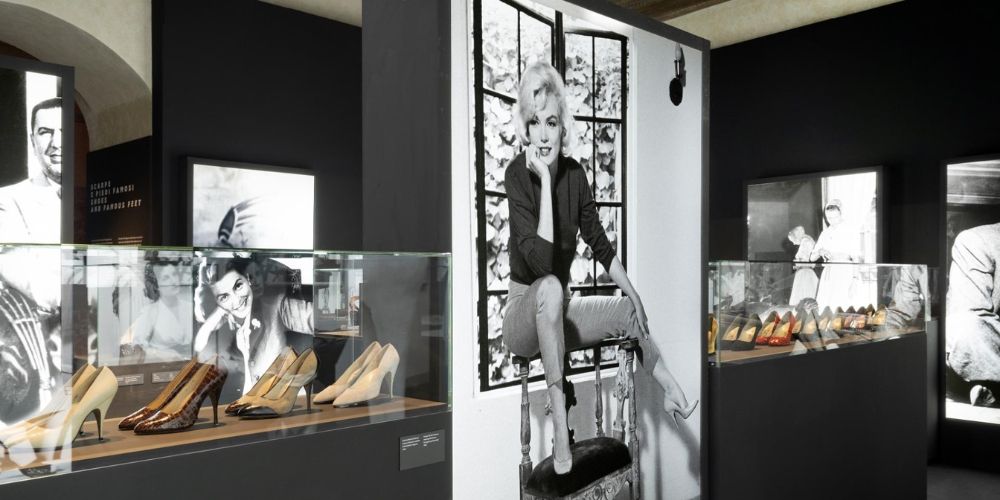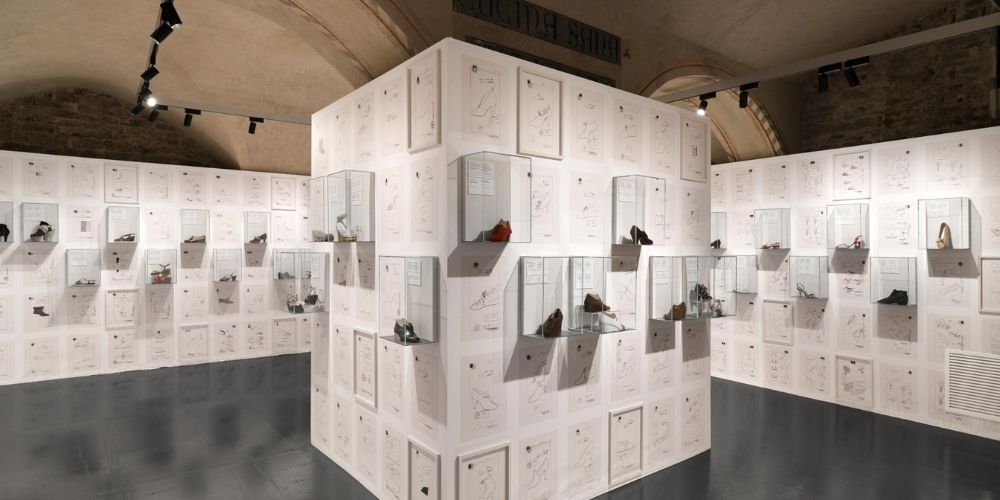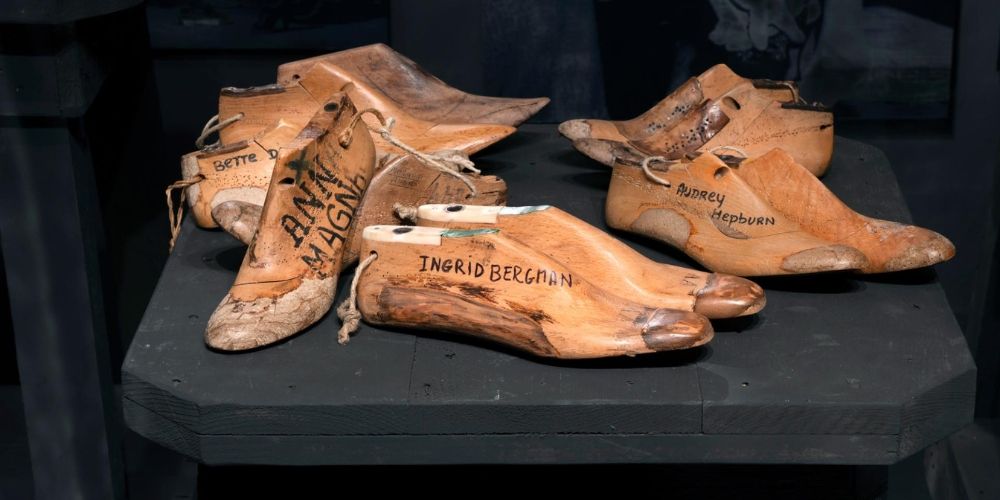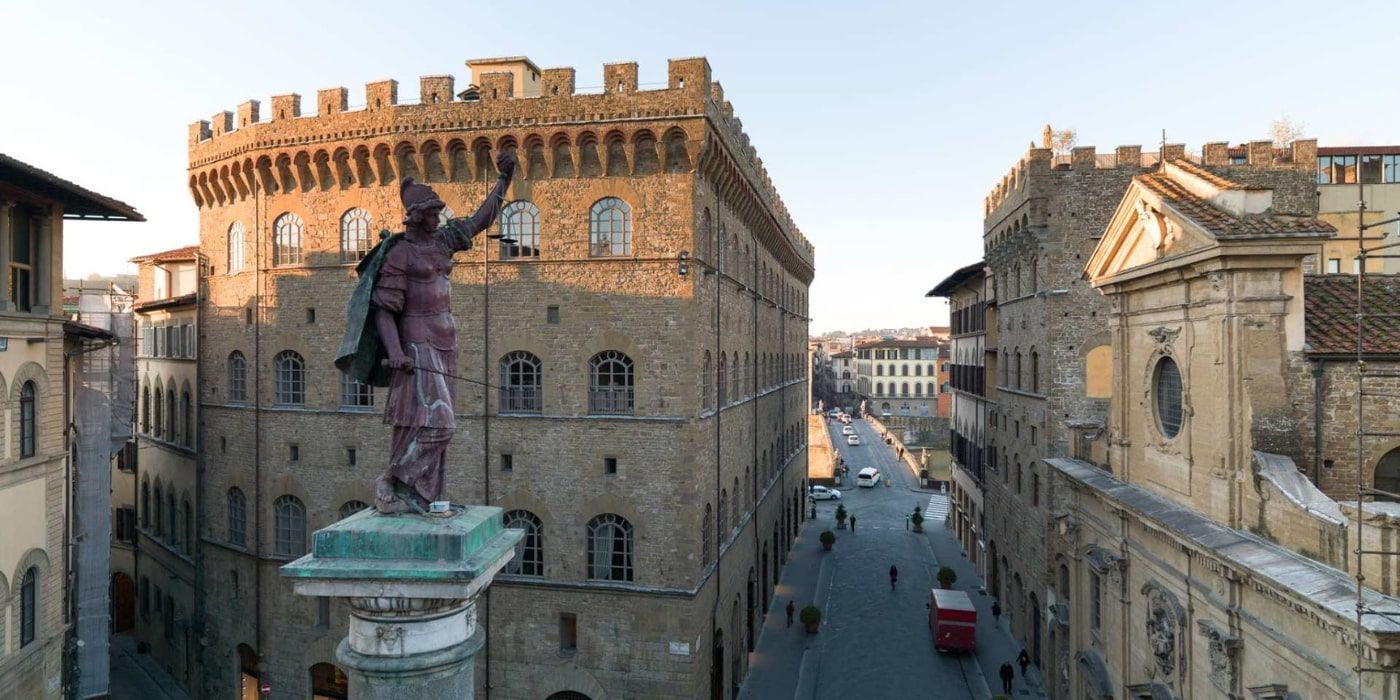The iconic shoes that have captivated generations of fashion enthusiasts, eagerly sought after by celebrities, royalty, and notable figures worldwide, are all there, together with archival films and photographs, rare documents, and works of art.
The Ferragamo Museum in Florence hosts a comprehensive retrospective to better understand the legacy of the most ingenious artisan of the last century. It also prompts reflection on the role of museums as a meeting point between the past and present.

Ferragamo Museum, the Grand Exhibition Dedicated to the Brand's Founder

100 years after the opening of the Hollywood Boot Shop, Salvatore Ferragamo's first store in the city of the major film studios, the brand museum is honouring its founder with an exhibition that retraces the history, achievements, and legacy of an Italian icon of style.
Inaugurated in October 2023, and curated by Stefania Ricci, director of the Ferragamo Museum and Foundation, the retrospective showcases the legendary designer's most beautiful creations not merely as standalone works of art but in a context that goes beyond their aesthetic value.
Each piece reflects Ferragamo's core values: entrepreneurial spirit, creativity, aesthetic sense, anatomical knowledge, manual skill, and the constant pursuit of new forms and materials.
Salvatore Ferragamo 1898-1960 is a journey through the life and work of the 'shoemaker to the stars'. The narrative touches on the American years and deep connection to Florence and includes the celebrities who loved and inspired his work, papers on anatomy studies and footwear design, and 368 patents.
Also, the exposition is a tribute to Italian design and its successful blend of artisanal craftsmanship, functionality, and technology.
The retrospective ideally follows the groundbreaking exhibition held at Palazzo Strozzi in 1985, a pioneering project among the first to elevate a fashion product to artistic and cultural status. That experience paved the way for the establishment of the Ferragamo Archive and Museum, cutting-edge institutions through which the company shares its history and values.
Visit Ferragamo Museum in FlorenceFerragamo Museum, a Piece of Florence’s History

The Ferragamo Museum is housed in Palazzo Spini Feroni, a medieval gem in the heart of Florence that has been home to the fashion house since the 1950s.
Located just steps from Ponte Vecchio, this building is one of the most intriguing medieval structures in the city, serving as a cultural and historical landmark. Undoubtedly, it stands out as a must-see attraction when visiting Florence, even for those who don't consider themselves fashion enthusiasts.
This impressive building, dating back to 1289, was commissioned by the wealthy patron Geri Spini, a banker to popes and kings, as a testament to his power and political influence.
Over the centuries, the palace has been renovated multiple times and adorned with decorations and artworks, such as the 17th-century frescoes by Bernardino Poccetti in the chapel on the noble floor or the marble statue The Fall of the Giants by Giuseppe Piamontini (1705).
In the 19th century, it became a luxury hotel and later served as the city hall during the years when Florence was Ital'y's capital (1865-1871). Also, it housed the prestigious G.P. Vieusseux Scientific Literary Cabinet.
In 1938, Salvatore Ferragamo chose it as his new luxury footwear workshop. In no time, Palazzo Spini Feroni became a cult destination: everyone wanted to visit the showroom in Piazza Santa Trinita to order the shoes crafted by the maestro himself.
The Ferragamo Museum: A Dynamic, Experiential Space with a Green Soul
Inaugurated in May 1995, the surprising Museo Ferragamo honours the creativity of the fashion house's founder and preserves his vast artistic and entrepreneurial legacy.
For nearly thirty years, the institution has been dedicated to showcasing the faithful image of a craftsman, entrepreneur, and visionary whose exceptional work helped establish the myth of made-in-Italy fashion.
The museum is a lively and dynamic experiential space. Drawing on an extensive material and immaterial heritage, it fosters a continuous dialogue between past and present, reflecting the company's engagement with contemporary cultural phenomena.
Beyond preserving the brand's history, the museum promotes events, publications, workshops, and exhibitions. It is a constantly evolving entity, with an annual rotating display of footwear exploring different research themes to delve into the Ferragamo universe and its intersections with art, architecture, design, and society.
In recent years, exhibitions have uncovered themes of particular significance to the fashion house, such as sustainability, and tributed Ferragamo's icons like Marilyn Monroe, Greta Garbo, and Audrey Hepburn.
Since 2015, it has proudly held the title of Italy's first green museum, an achievement recognised by the international ISO 14064 certification for greenhouse gas emissions reporting.
Salvatore Ferragamo: The Shoemaker of Dreams

America welcomed Salvatore Ferragamo at the tender age of sixteen. From humble childhood in the Avellino province as the eleventh of fourteen children, he knew the splendours of Hollywood's golden age.
The young craftsman studied the mechanics of the foot and its anatomy at the University of Southern California in order to build the perfect comfortable shoe.
The first boutique opened in Santa Barbara in the 1920s, then cinema came. After designing footwear for the epic drama The Ten Commandments, his rise was unstoppable.
Movie stars of the era adored him: he created simple, elegant brown leather shoes for Lottie Pickford; "corkscrew heels studded with imitation pearls" for Gloria Swanson; golden heels for Dolores Del Rio.
He knew all the secrets of celebrity feet, from Marlene Dietrich's perfect proportion to Audrey Hepburn's long and slender foot. "The size of your feet tells me about your character", he claimed.
In 1927, he returned to Italy and chose Florence for the new bespoke workshop, where research and experimentation were constant. By the late 1930s, he introduced cork soles. It was an outstanding success that represented the only authentic fashion phenomenon of the period.
Ferragamo's creations, balanced between design, art, and artisanal tradition, were always designed for comfort. Some models made history: the Rainbow platform sandals inspired by Judy Garland; the red Swarovski-studded pump made unforgettable by Marilyn Monroe in 'Let's Make Love'; Invisibile, the 'invisibile' nylon sandal for which he earned the Neiman Marcus Award in 1947.
The designer passed away in 1960, leaving the company in the hands of his wife, Wanda, and eldest daughter, Fiamma.
The Ferragamo Museum preserves his legacy. The archive includes over 14,000 shoe models, a collection of 19th and 20th-century footwear gathered by Ferragamo himself, along with clothing, bags and documents.
About the author
Written on 05/08/2024




Lorena Calise
The legend of Salvatore Ferragamo lives in the acclaimed exhibition at Palazzo Spini Feroni in Florence, on display until April 27, 2025.